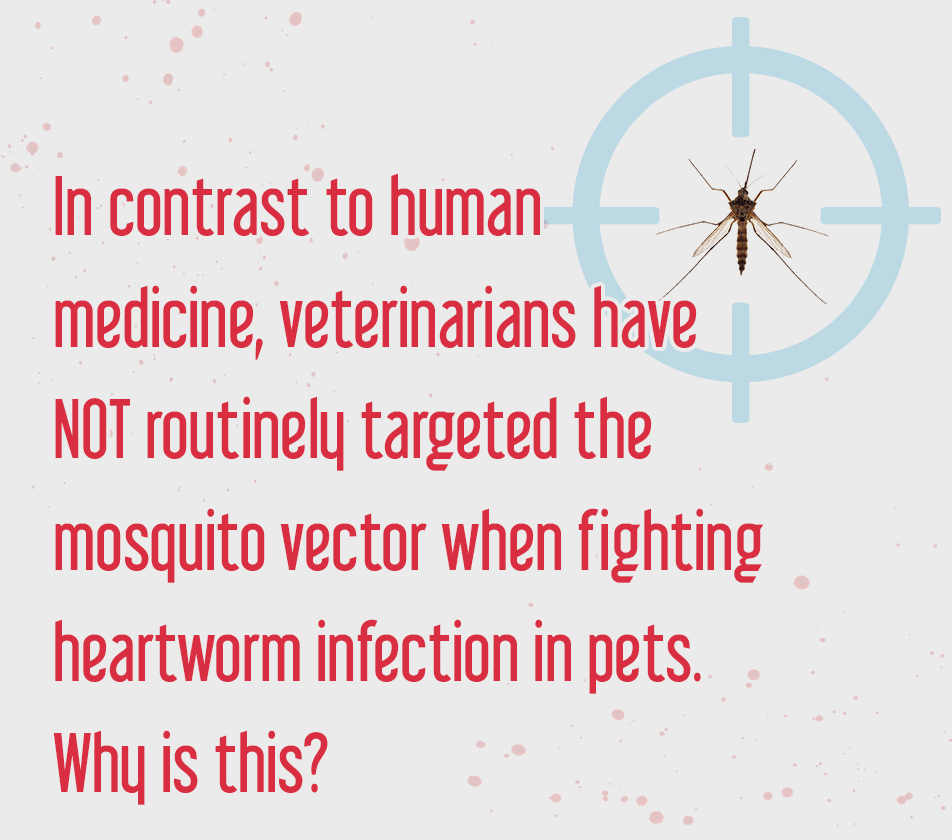Chapter Five
Chapter Five
Vector-Borne Disease Control in Veterinary Medicine

In contrast to human medicine, veterinarians have NOT routinely targeted the mosquito vector when fighting heartworm infection in pets. Why is this?
In veterinary medicine, an unusual thing happened. At almost the same time that veterinarians became aware of how serious infection with heartworms was for pets, some very effective drugs were introduced by the pharmaceutical industry. These drugs, called macrocyclic lactones, or heartworm preventives, are designed to be given to pets orally or by injection (in a time-released product) on a regular basis to kill the young worms after they have entered the pet’s body but before they have developed to the stages that cause harm.
For over 25 years these drugs seemed to be doing a good job, as long as pet owners used them absolutely according to their label instructions, year-round. Because these drugs did such a good job under ideal circumstances, the veterinary profession had little reason to worry about vector control, as human medicine did when it lacked any good drugs or vaccines.
The Resistance
Unfortunately, we now see an alarming increase in the number of heartworm infection cases in pet dogs and cats over the past several years. This increase is believed to be the result of owners not using the oral (or injectable time-release) preventives as compliantly as they should but also because strains of heartworms that are resistant to the preventives have now been detected in a large area of the mid-US. Even when pets receive their preventive medications perfectly compliantly, these strains are able to evade the drugs and develop to adults in the great vessels and lungs of the pet.
Most experts agree that it will be many years before we have new preventive drugs to fight the resistant strains of heartworm that may continue to emerge and spread during that time. Until recently, we have not had the kind of data showing that commercial topical ectoparasiticide products can effectively repel and kill mosquitoes and, thus, block the transmission of heartworm organisms from mosquitoes to pets and from pets to mosquitoes. But, in the past couple of years, studies have been conducted to assess the effectiveness of such products as repellents and insecticides for mosquitoes of many species. These studies show promise for a multi-modal approach that includes use of macrocyclic lactones in combination with repellent insecticidal topical products (McCall, 2015)11. We will discuss in depth the science behind the preventive synergy of macrocyclic lactone drugs in combination with repellent insecticidal topical in a later module.

11 McCall JW, Hodgkins E, Varloud M, et al. Inhibition of the transmission of Dirofilaria immitis to mosquitoes by weekly exposure of microfilaremic dogs treated topically with dinotefuran-permethrin-pyriproxyfen to uninfected Aedes aegypti, in Proceedings 60th Ann Meet Amer Assoc Vet Parasitol 2015; Abstract No. 7; 60.

